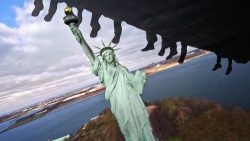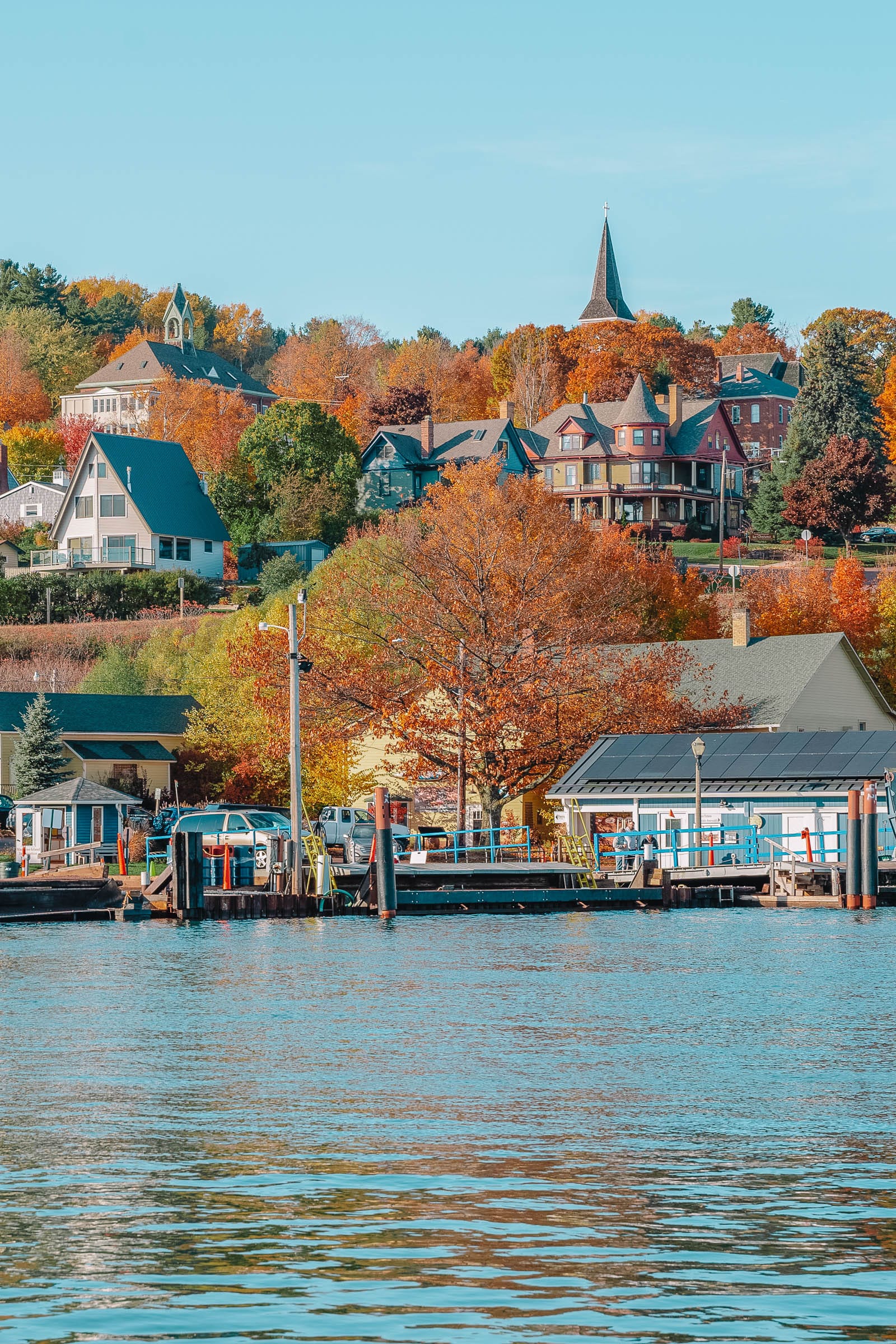Yellowstone National Park, located primarily in the U.S. state of Wyoming, is a vast and diverse wilderness area that attracts millions of visitors each year. Established in 1872, it was the first national park in the United States and is widely considered to be the first national park in the world. Spanning over 2.2 million acres, Yellowstone is home to a wide variety of geothermal features, including geysers, hot springs, and mud pots. It is also known for its stunning waterfalls, abundant wildlife, and extensive network of hiking trails.
Key Takeaways
- Yellowstone National Park is a must-visit destination for nature lovers and adventure enthusiasts.
- The geothermal features, including the famous Old Faithful geyser, are a spectacular sight to witness.
- The park is home to several breathtaking waterfalls, including the Lower Falls of the Yellowstone River.
- Visitors can experience the wildlife of Yellowstone, including bison, elk, and grizzly bears.
- Hiking trails in the park offer a range of options for adventure seekers, from easy walks to challenging treks.
Witness the Spectacular Geothermal Features
One of the main attractions of Yellowstone National Park is its geothermal features. The park sits atop one of the world’s largest active volcanic systems, which fuels the geysers, hot springs, and mud pots that can be found throughout the park. The most famous geyser in Yellowstone is Old Faithful, which erupts approximately every 90 minutes and shoots water up to 180 feet in the air. Other notable geysers include Grand Geyser, Castle Geyser, and Riverside Geyser.
In addition to geysers, Yellowstone is home to a wide variety of hot springs. These colorful pools are created by underground heat sources that heat the water and cause it to rise to the surface. The most famous hot spring in the park is the Grand Prismatic Spring, which is known for its vibrant colors and large size. Other notable hot springs include Mammoth Hot Springs and Norris Geyser Basin.
Yellowstone also has a number of mud pots, which are formed when acidic gases dissolve surrounding rock and create a bubbling mixture of mud and water. These mud pots can be found in areas such as Fountain Paint Pot and Mud Volcano.
Explore the Breathtaking Waterfalls
Yellowstone National Park is home to several stunning waterfalls that are worth exploring. One of the most famous waterfalls in the park is the Lower Falls of the Yellowstone River, which is located in the Grand Canyon of the Yellowstone. This waterfall is nearly twice as high as Niagara Falls and offers breathtaking views from various viewpoints along the canyon rim.
Another notable waterfall in Yellowstone is Tower Fall, which is located near the Tower-Roosevelt area of the park. This waterfall drops approximately 132 feet and can be viewed from a short trail that leads to an overlook.
For those looking for a more secluded waterfall experience, Fairy Falls is a great option. This waterfall is located in the Midway Geyser Basin area and requires a 5-mile roundtrip hike to reach. The hike offers beautiful views of the surrounding geothermal features and ends at a picturesque waterfall.
Experience the Wildlife of Yellowstone
| Wildlife Species | Number of Species | Population | Threatened Species |
|---|---|---|---|
| Bison | 1 | 4,900 | No |
| Elk | 1 | 10,000 | No |
| Grizzly Bear | 1 | 700 | Yes |
| Gray Wolf | 1 | 100 | Yes |
| Coyote | 1 | 1,000 | No |
Yellowstone National Park is home to a diverse array of wildlife, making it a popular destination for wildlife enthusiasts. The park is home to large populations of animals such as bison, elk, and moose. It is also one of the few places in the United States where visitors can see wolves in their natural habitat.
One of the best areas to spot wildlife in Yellowstone is Lamar Valley, which is often referred to as the “Serengeti of North America.” This expansive valley is home to large herds of bison and elk, as well as wolves and other predators. Visitors can often see these animals grazing in the meadows or hunting for prey.
Another great area for wildlife viewing is Hayden Valley, which is located near Yellowstone Lake. This valley is known for its large population of bison and is also a popular spot for spotting grizzly bears and wolves.
For those interested in birdwatching, the park offers excellent opportunities to see a variety of bird species. The Yellowstone Lake area is particularly good for birdwatching, as it is home to a number of waterfowl species.
Hiking Trails for Adventure Enthusiasts
Yellowstone National Park offers a wide variety of hiking trails for adventure enthusiasts of all skill levels. Whether you’re looking for a short, easy hike or a challenging multi-day trek, there is something for everyone in the park.
One of the most popular hikes in Yellowstone is the Uncle Tom’s Trail, which leads down into the Grand Canyon of the Yellowstone. This trail offers stunning views of the Lower Falls and is relatively short and easy, making it accessible to most visitors.
For those looking for a longer and more challenging hike, the Mount Washburn Trail is a great option. This trail leads to the summit of Mount Washburn, which offers panoramic views of the surrounding landscape. The hike is approximately 6 miles roundtrip and gains over 1,400 feet in elevation.
For experienced hikers looking for a multi-day adventure, the Yellowstone River Trail is a great option. This 20-mile trail follows the Yellowstone River through the heart of the park and offers stunning views of the river and surrounding wilderness.
Discover the History of Yellowstone

Yellowstone National Park has a rich history that dates back thousands of years. The park has been inhabited by Native American tribes for over 11,000 years, and evidence of their presence can still be found throughout the park.
In the early 19th century, European explorers began to venture into the Yellowstone region. The first recorded expedition to the area was led by John Colter, a member of the Lewis and Clark Expedition. Colter’s reports of geysers and other geothermal features were initially met with skepticism, but eventually sparked interest in the region.
In 1872, President Ulysses S. Grant signed a bill into law that established Yellowstone National Park as the first national park in the United States. This marked a significant milestone in the conservation movement and set a precedent for the establishment of national parks around the world.
Today, visitors to Yellowstone can explore the park’s history through a variety of historical sites and interpretive exhibits. The Old Faithful Inn, which was built in 1903, is one of the most iconic buildings in the park and offers a glimpse into the park’s early days. The Norris Geyser Basin Museum provides information on the park’s geothermal features and their geological significance.
Camping and Accommodation Options in Yellowstone
Yellowstone National Park offers a variety of camping and lodging options for visitors. The park has 12 campgrounds that are open to both tent and RV camping. These campgrounds offer a range of amenities, including picnic tables, fire rings, and access to restrooms and drinking water.
For those looking for a more comfortable lodging experience, Yellowstone offers several lodges and cabins throughout the park. The Old Faithful Inn is one of the most popular lodging options in the park and offers a unique and historic atmosphere. Other lodges in the park include Lake Yellowstone Hotel, Mammoth Hot Springs Hotel, and Canyon Lodge.
In addition to camping and lodging within the park, there are also several options for camping and lodging in nearby gateway communities. These communities offer a range of accommodations, including hotels, cabins, and vacation rentals.
Fishing and Boating in Yellowstone
Yellowstone National Park offers excellent opportunities for fishing and boating. The park is home to over 200 miles of rivers and streams, as well as several lakes, which are teeming with fish.
Fishing is allowed in most waters within the park, although there are some restrictions in certain areas. Anglers can catch a variety of fish species, including trout, grayling, and whitefish. Fishing licenses are required for anyone over the age of 16 and can be purchased at various locations within the park.
Boating is also popular in Yellowstone, particularly on Yellowstone Lake. The lake offers opportunities for kayaking, canoeing, and motorized boating. There are several boat ramps and marinas located around the lake, where visitors can launch their boats or rent equipment.
Winter Activities in Yellowstone
Yellowstone National Park offers a variety of winter activities for visitors to enjoy. The park is open year-round, although some roads and facilities may be closed during the winter months.
One of the most popular winter activities in Yellowstone is cross-country skiing. The park has over 150 miles of groomed ski trails, which offer stunning views of the snow-covered landscape. Ski rentals are available at various locations within the park.
Snowshoeing is another popular winter activity in Yellowstone. The park has a number of designated snowshoe trails, as well as opportunities for off-trail exploration. Snowshoes can be rented at various locations within the park.
For those looking for a unique winter experience, snowcoach tours are available in Yellowstone. These guided tours take visitors through the park in heated vehicles, allowing them to explore the winter landscape and view wildlife.
Tips for Planning Your Yellowstone Adventure
When planning a trip to Yellowstone National Park, there are several things to keep in mind to ensure a successful and enjoyable visit.
First and foremost, it’s important to plan ahead and make reservations for camping or lodging well in advance. The park is extremely popular and accommodations can fill up quickly, especially during peak season.
It’s also important to be prepared for changing weather conditions. Yellowstone’s weather can be unpredictable, with temperatures ranging from below freezing to hot and sunny. It’s important to dress in layers and bring appropriate gear for all types of weather.
Additionally, it’s important to be mindful of wildlife safety while visiting the park. Visitors should always keep a safe distance from wildlife and never approach or feed them. It’s also important to store food and other scented items in bear-proof containers or lockers to prevent attracting wildlife.
Lastly, it’s important to be respectful of the park and its resources. Visitors should stay on designated trails, dispose of trash properly, and follow all park regulations to help preserve the park for future generations.
In conclusion, Yellowstone National Park offers a wide range of activities and attractions for visitors to enjoy. From its geothermal features and waterfalls to its abundant wildlife and hiking trails, there is something for everyone in this iconic national park. Whether you’re planning a summer adventure or a winter getaway, Yellowstone is sure to leave you with memories that will last a lifetime.
FAQs
What is Yellowstone National Park?
Yellowstone National Park is a national park located in the western United States, primarily in the state of Wyoming, although it also extends into Montana and Idaho. It was established in 1872 and is widely considered to be the first national park in the world.
What are some popular things to do in Yellowstone National Park?
Some popular things to do in Yellowstone National Park include hiking, camping, wildlife watching, visiting geysers and hot springs, fishing, and boating.
What are some of the most famous geysers in Yellowstone National Park?
Some of the most famous geysers in Yellowstone National Park include Old Faithful, Grand Geyser, Castle Geyser, and Riverside Geyser.
What kind of wildlife can be found in Yellowstone National Park?
Yellowstone National Park is home to a wide variety of wildlife, including grizzly bears, black bears, wolves, elk, bison, moose, and bighorn sheep.
What is the best time of year to visit Yellowstone National Park?
The best time of year to visit Yellowstone National Park depends on what you want to do and see. Summer is the most popular time to visit, but it can be crowded. Spring and fall offer fewer crowds and cooler temperatures, while winter offers unique opportunities for snowshoeing, cross-country skiing, and wildlife watching.
Are there any fees to enter Yellowstone National Park?
Yes, there are fees to enter Yellowstone National Park. The entrance fee for a private, non-commercial vehicle is $35, while the entrance fee for an individual on foot or bicycle is $20. There are also annual passes and other options available.
- Unveiling the Truth: Weightlifting for Women and Strength Building - November 4, 2024
- The Ultimate Guide to Weightlifting for Beginners - November 4, 2024
- Boost Your Mood and Ease Anxiety with Cardio Exercises - November 4, 2024




